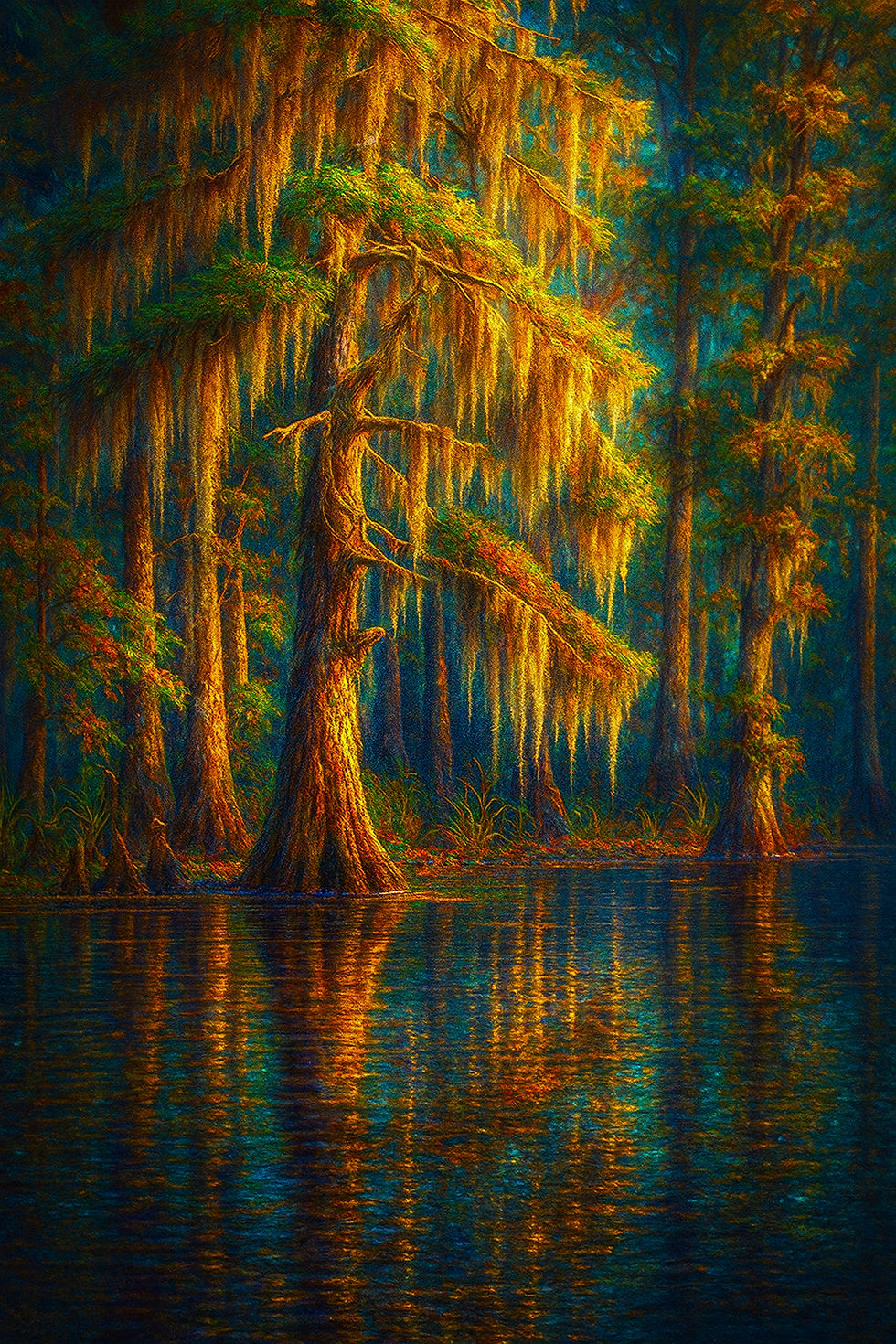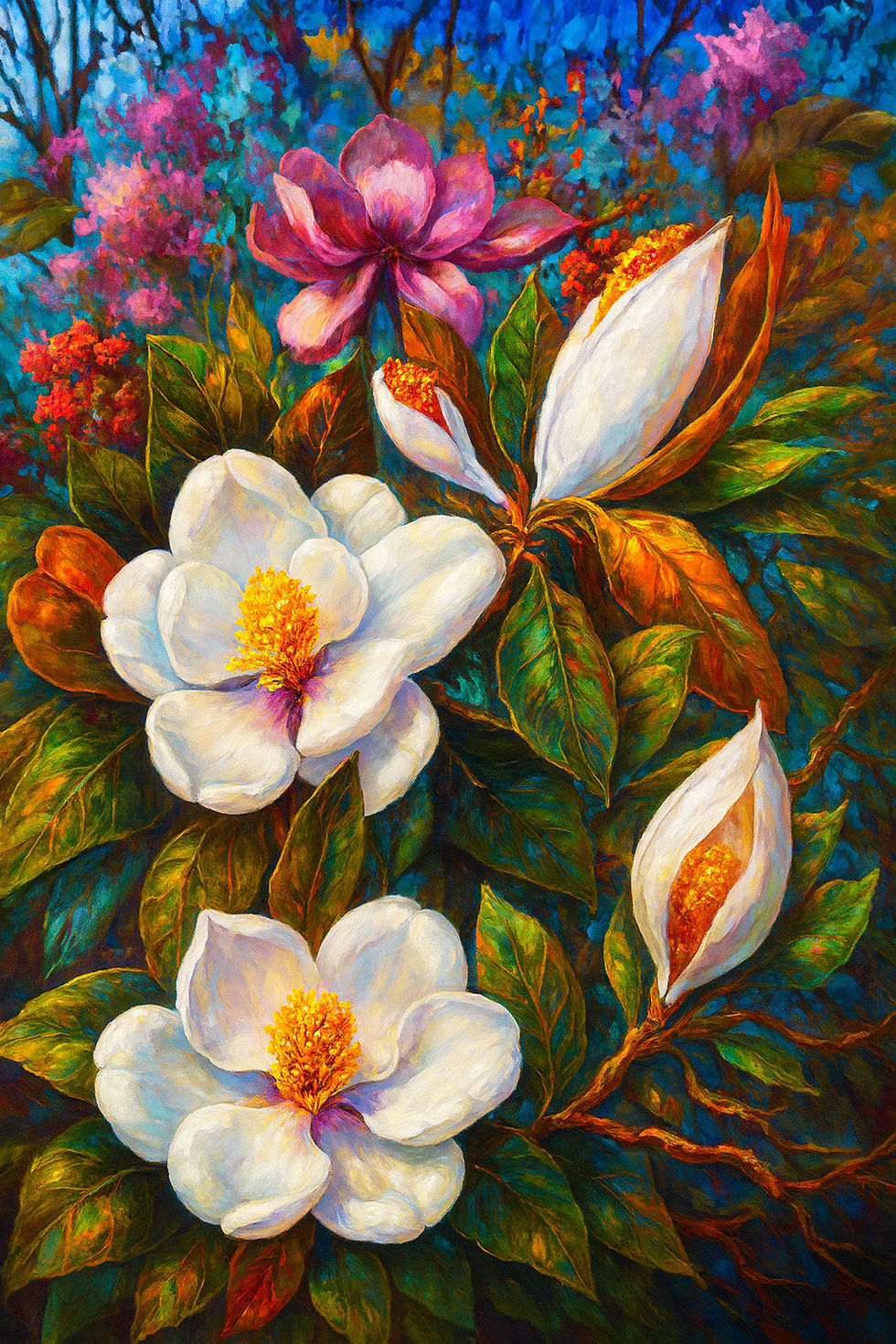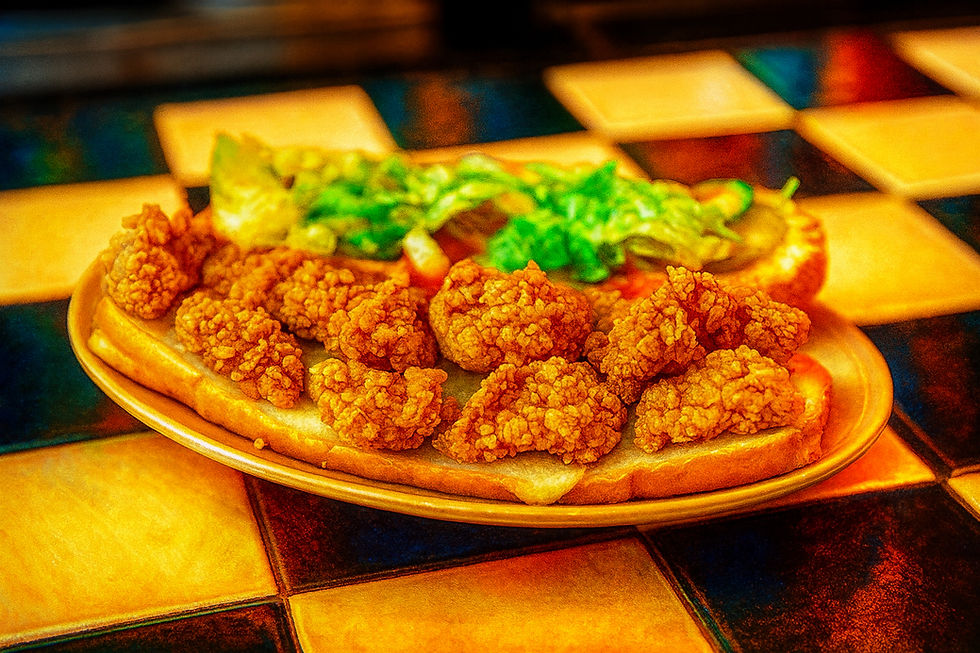Bayou Culture: The Plants of the Swamp
- Laura Kuhn

- Aug 12
- 2 min read

Step into Louisiana’s swamps and you’ll find yourself in a world that feels both ancient and alive—a green cathedral of trees, vines, and blooms that thrive in still, dark waters. The bayou isn’t just home to wildlife—it’s a living tapestry of plants that have shaped the landscape for centuries. Among the most iconic are the towering bald cypress, the ethereal drape of Spanish moss, the delicate floating water lilies, and the elegant magnolia blossoms that frame the wetlands’ edges.
Cypress Trees: The Guardians of the Bayou
Bald cypress trees are the unmistakable sentinels of Louisiana’s wetlands. With their flared trunks and “knees” poking up through the water, they seem almost sculpted by nature. These trees are perfectly adapted to life in the swamp, with root systems that stabilize them in soft, marshy soil and help them breathe in flooded conditions.
In Cajun folklore, cypress trees are seen as wise, ancient protectors of the swamp. Many have stood for hundreds of years, weathering hurricanes and changing tides, their moss-covered branches providing shelter to countless species of birds, insects, and reptiles.
Spanish Moss: The Swamp’s Silvery Veil
Hanging in long, wispy curtains from cypress and oak branches, Spanish moss gives Louisiana’s swamps their dreamy, mysterious charm. Despite its name, it’s not actually moss at all—it’s a bromeliad, related to the pineapple.
Spanish moss thrives in the humid air, absorbing nutrients and water directly from rainfall and the atmosphere. Historically, it was used to stuff mattresses, insulate houses, and even weave into ropes. Today, it remains one of the most recognizable features of the Southern landscape, framing sunsets and moonlit nights with its ghostly drape.

Water Lilies: Floating Jewels of the Bayou
In still backwaters and slow-moving channels, you’ll find water lilies spreading across the surface like living paintings. Their round leaves create floating mats that shade fish below, while their delicate blooms—ranging from white to yellow to pink—add splashes of color to the green and brown palette of the swamp.
Water lilies aren’t just beautiful—they’re vital to the ecosystem. They help oxygenate the water, provide food and shelter for aquatic creatures, and contribute to the health of the wetland environment.

Magnolias: The Bayou’s Fragrant Crown
While magnolias don’t grow deep in the swamp waters, they flourish along the fringes—on natural levees, ridges, and slightly elevated banks where the soil is moist but well-drained. The Southern magnolia (Magnolia grandiflora), Louisiana’s state flower, is instantly recognizable for its glossy, evergreen leaves and enormous creamy-white blossoms that perfume the warm air.
Magnolias add a touch of grace to the swamp’s rugged beauty. In spring and summer, their blooms stand out like beacons, while in Southern folklore, they symbolize dignity, strength, and hospitality—qualities deeply woven into Louisiana’s cultural fabric.
A Swamp Symphony
Together, cypress trees, Spanish moss, water lilies, and magnolias form the backdrop of Louisiana’s wetlands—places that inspire art, music, and storytelling. They’re more than just plants; they’re symbols of endurance, beauty, and the deep connection between the land and the culture it sustains.
Whether you’re drifting quietly in a pirogue or speeding by on an airboat, take a moment to notice these living icons. In their roots, leaves, and blossoms, you’ll find the true spirit of the swamp.








Comments